Best sights, experiences and eats in Korea.
If you’re hooked on K-pop, K-drama or K-food, a visit to South Korea is the only way you can scratch that Korean fascination itch. Not sure what to do?
Noodlies, Sydney food blog, in a previous life, came up with the concept of SBS PopAsia TV and am a little Korean-struck myself. Having just returned from an eight-day visit that included Seoul and the southern city of Busan, I can say there is no shortage of sights, experiences and of course, Korean food to enjoy.
I started out with a list of top 10 things to do in Korea, but couldn’t fit everything in, so here’s noodlies’ list of top 20 things to do in South Korea (in no particular order):
(1) Korean BBQ: it’s a must when you’re visiting Seoul, dyi bbq beef with soju or makgeolli. You’ll find plenty of places around the Insadong area or try Majang-dong’s Gogi Alley. You haven’t been to Korea until you sit down to Korean bbq.
(2) Street food in Seoul: shopping must make you hungry because all the main shopping areas have great street food. The Myeong-dong shopping area in particular has an amazing variety of food on the go; sweet and savoury, food on a stick to hot noodles.
(3) Bibimbap: one of the pleasures of being in a country is trying the different variations iconic dishes. This bibimbap at a local restaurant opposite the Dongdaemun Design Plaza serves up a regional variation, here the rice is served separately to the main bowl. What are you waiting for? Give a humble Korean restaurant a go.
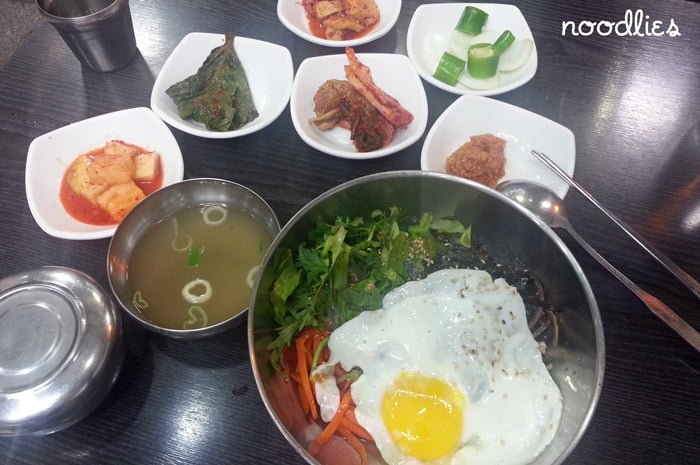
(4) Dongdaemun Market: it’s Korea’s largest wholesale and retail shopping district featuring 26 shopping malls, 30,000 specialty shops, and 50,000 manufacturers. All kinds of goods can be found here including silks and fabric, electronics, leather goods, sporting goods, but it’s the fashion – endless towers and floors of Korean fashion that attract the punters. Major shopping malls in the area Doota (located within Doosan Tower), Migliore, Good Morning City, Freya Town, LOTTE FITIN and Hello apM (photo: Seoul Metropolitan Government).
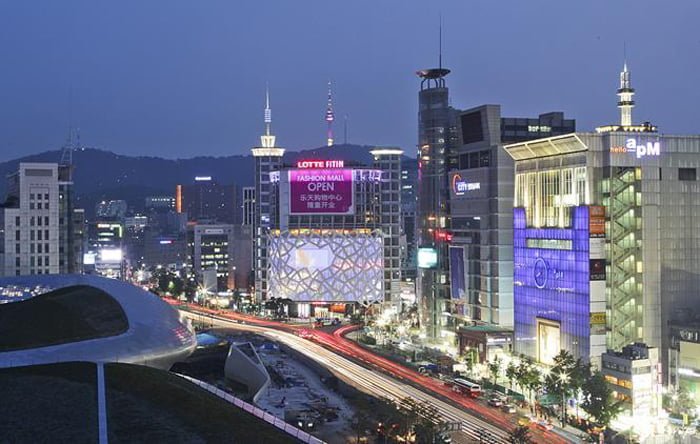
(5) Dongdaemun Design Plaza (DDP): opened in March 2014, Korea’s latest and most stunning landmark, located in the Dongdaemun shopping district, this building includes five halls: Art Hall, Museum, Design Lab, Design Market and Dongdaemun History and Culture Park. Designed by world renowned architect, Zaha Hadid, DDP is the world’s largest atypical architecture. If you think the outside is stunning, wait until to enter the Star Trek interior (photo: Seoul Metropolitan Government).
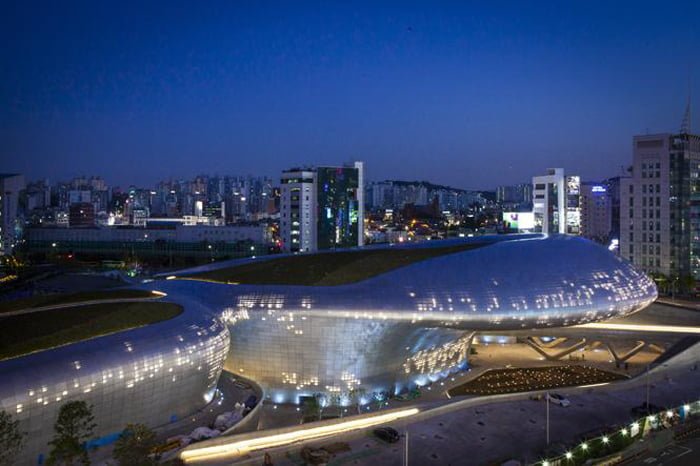
(6) Sinsadong Ddokbokki: you’ll find there’s an alley for just about every Korean dish. This one, in Sinsadong (or Sinsa-dong) is all about those pert, tubular rice cakes. For what you get, it’s unbeatable value; the dish is overflowing with goodness. A standard serve is W$1100 (around A$13) and includes ddeok, ramen and jjolmyeon noodles, fish cakes, dumplings and enoki mushrooms in a sweet and tangy sauce.
(7) Seoul Kim Chi Academy House: students from around the world flock here for their popular kim chi cooking class, which is run in English and Japanese. You even leave with a sealed bag of the kim chi you’ve made as evidence of the new Korean culinary skills.
(8) Insa-dong (인사동): located in the heart of the city, this area is a magnet for tourists for all the right reasons. There’s one main road in Insa-dong with alleys on each side containing galleries, traditional restaurants, traditional tea houses and cafes. This is the spot to get little nick-nacks for the relatives back at home, everything from tshirts, key rings, traditional fabrics and more, the amazing thing is they’re not at rip off prices. Watch as locals explain the attractions of Insa-dong to an Australian visitor.
(9) Gwangjang Market: over 100 years old, Gwangjang Market is the largest and oldest daily market in Korea. Famed for all sorts of goods from clothing, linen through to fresh produce, and of course, street food. The market has a special significance for Koreans, established by a group of Korean traders as a permanent market during the time of the Japanese occupation when markets were generally only allowed to be temporary. At 9pm, other stalls are closed, but the food section, deep inside the market, is buzzing, noisy, fragrant and completely addictive. Noodlies, Sydney food blog had mung bean pancakes inside a restaurant but, as you can see in the video below, there are lots of street food for ddeokbokki, pancakes, grilled meat and fish to be had at the stalls outside.
(10) Gajalchi Market, Busan: this is Korea’s largest seafood market and it is endless fish, crab, eel, sea squirt for as far as the eye can see. Order your live fish and they’ll cook it for you on the spot. Raw fish and sea squirt is another specialty of this must visit market.
(11) Makgeolli: this milky alcoholic beverage was once popular with the farmers of centuries years ago. Makgeolli (pronounced mak-a-lee) is a sweet, cloudy tipple that’s often called a wine, but is actually made by fermenting rice, is making a comeback. There are plenty of makgeolli bars serving traditional through to modern versions, Hol Hyang is a good bar to sip makgeolli with light Korean snacks. The Ariang video below explains how makgeolli is made.
(12) Gyeongbokgung Palace: built in 1395, it’s also commonly referred to as the “Northern Palace” because it is the furthest north when compared to the neighboring palaces of Changdeokgung (Eastern Palace) and Gyeongheegung (Western Palace). Gyeongbokgung Palace is arguably the most beautiful and remains the grandest of all five palaces. Make sure you visit the section near the kitchen where Korean bean paste were made in huge ceramic containers.
(13) Temple Stay: need to simplify your life? Want to know how monastics live? Temple Stay is a fantastic program that’s run across over 30 temples in Korea; getting up at 4.30am, traditional tea ceremony, 108 prostrations, meditation, making lanterns and prayer beads. There’s a range of programs from half day to two days. Noodlies loved the half day Temple Life experience at Geumsunsa Temple, located high in the Mt Bukhan (Samgak) National Park.
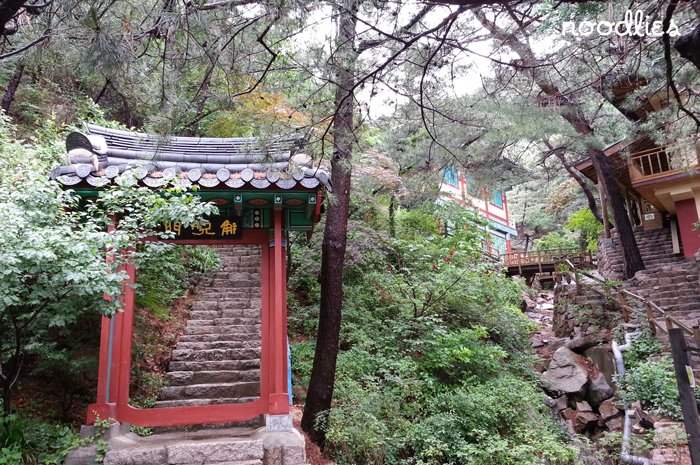
(14) POOM Seoul: located on Namsan mountain, it overlooks Seoul. This fine diner is consistently named as one of the best in Seoul. POOM serves up traditional banga (royal or noble cuisine) with a modern, simplified twist. It’s about subtle flavours, you get the hint from the zen-like decor. The degustation menu is changed frequently to take advantage of the freshest ingredients. Ssambap jeongsik below is an elegant example.
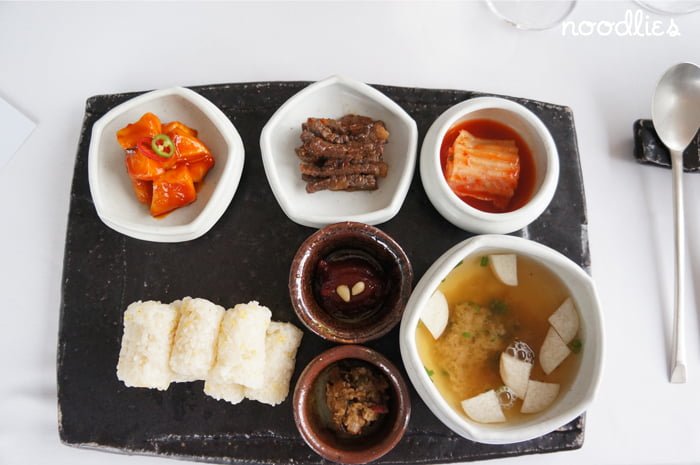
(15) Cookin’ Nanta: non-verbal performance is all the rage in popular theatre in Korea and Cookin’ Nanta, which first opened in 1997, is now world famous. It holds the record for the most box office sales in Korean stage history; 29,000 shows and watched by over 9.3m people world wide. The performance integrates Korea’s traditional rhythm, samulnori, with comedy, drama and lots of pots and pans. It’s a feel good, audience participation number that’ll delight the whole family.
(16) Tosokchon (토속촌): samgyetang (Korean ginseng) chicken is said to be best during the hot summer days. But the queues at Tosokchon, claimed by many as the best in Korea, is 100m long each day, with as many camera weilding tourists as locals. A whole young chicken (less than 49 days old) is stuffed with sticky rice and cooked in ginseng rich broth and other herbs and spices such as jujube fruits, gingko nuts, garlic and ginger. Each bowl comes with a warming micro shot of ginseng soju. The hanok (traditional Korean architecture), with a maze of dining rooms, adds to the ambiance. TIP: to avoid the queue, come around 3pm.
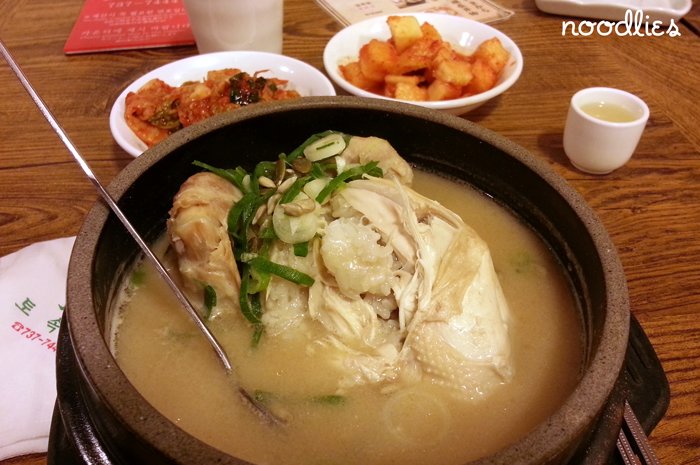
(17) Bulgogi Brothers: if you like your meat, Bulgogi Brothers is a chain that does a good job at giving you an authentic taste. Their staff are helpful especially if you’re looking a bit lost – they’ll navigate the cooking of your beef at the table for you.

(18) Klive (Lotte FITIN, Dongdaemun): how can you say you’ve been to Korea without seeing a K-pop band? Well, if you can’t ambush Big Bang in a dark alley, then dance with their amazingly life-like hologram. PSY and 2NE1 are available too if that’s more your thing.
(19) Vinyl Bar: cocktail in a bag. Too cool for school, Vinyl, is a micro bar that serves up all your favourite cocktails in a convenient take away vinyl bag, sparking a spate of copy cats. Years later, it’s still a hot spot for nearby university students thanks to a wicked playlist.
(20) Street food in Busan: great feeds on the street; it doesn’t get any better than this. From ddeokbokki, pa-jeon (Korean pancakes), hoddeok to one of my favourite street food finds – these deep fried delights below; liberally covered in three sauces, chilli, bbq and mayo, then served on top of a freshly fried egg.
As you can see there are many, many delicious experiences in Korea for you to see, do and enjoy. I love it that the people love their food, they’re literally eating morning to night, with lots of fabulous street food stalls everywhere.
Maybe it’s time for you to start your own Korean adventure?
Acknowledgements: to research this unforgettable holiday, noodlies, Sydney food blog found these resources invaluable:
- Lonely Planet: an amazing bible that it worth its weight in gold.
- StyleCity Seoul: a visual guide with stunning photographs.
- Korean Tourism Organization website: really handy for a quick summary of sights, experiences and restaurants with concise address and “how to get there” info.
And a final thanks from noodlies, Sydney food blog to the Korean Tourism Organization, who hosted me for these wonderful eight days and to Asiana Airlines for getting me there and back in Business Class comfort.

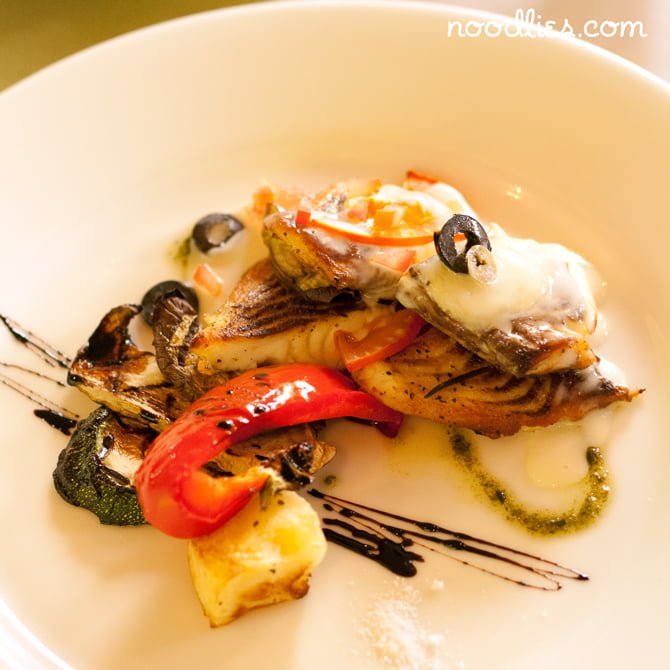
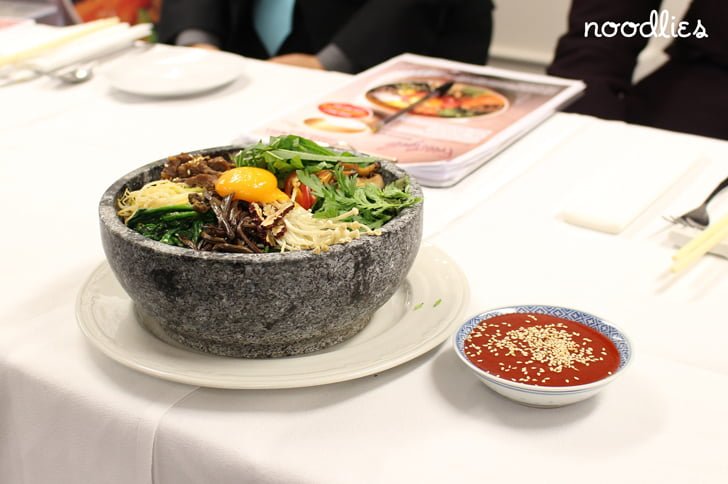
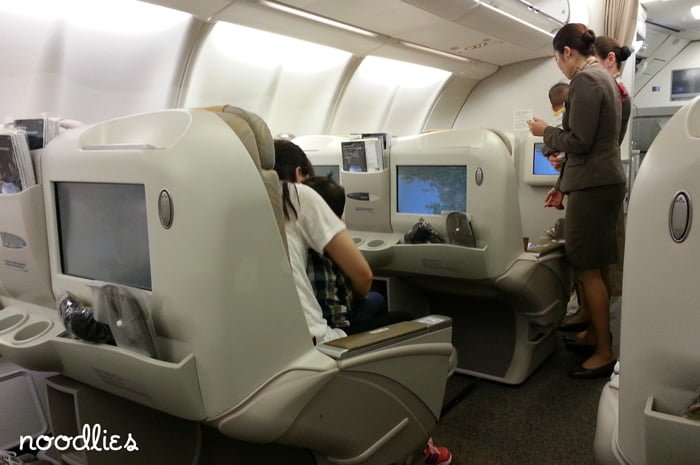
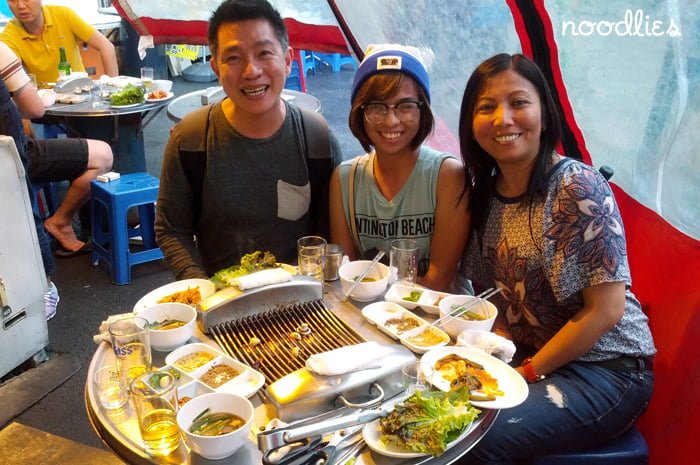

Korea!!
So much good food, so much shopping!
OMG STREET FOOD!! How much I want that! haha!
I love it how street food is available all the time and everywhere.. wish we had the same in Sydney!
I feel like crying reading this post. Really want to go to Korea! Especially for the street food mmm. Great post as always, Thang!
Well Irene, enter the competition 🙂
Oh wow, how exciting!! Loving all the food posts so far, there’s so much to eat… Happy dance 🙂
I’m inspired! Korea looks and sounds amazing!! I want to experience all the things you’ve mentioned above – esp. the Dongdaemun Design Plaza and the Makgeolli. 🙂 Perhaps, both at once! 😀 I’ve entered the competition.
Great list! I’d completely forgotten that I’d seen Nanta until your post. But the absolute best part of Korea is Hwaesong Fortress, in Suwon — which is sort of part of Seoul! Have you been? I love it in every season. Must be some good food around there too …
oooh haven’t been to Hwaesong, will be on the list for the next visit, Ashley, sounds great.
this post makes me want to hop on a plane to Korea already. would love to check out the Gwangjang Market though the Seoul Kim Chi Academy House sounds very interesting especially since mum is obsessed with kim chi lately.
That market is awesome Annie…
Now I want to go to Korea and do all top 20 things. Teehee. Great post Thang!
Great list, especially visiting Jagalchi. Lots of things to put on the to-do list 🙂 I would also recommend visiting Haeundae Beach and Gwangalli Beach while in Busan!
Haeundae Beach: http://boundforbusan.com/2015/01/haeundae-beac.html
Gwangalli Beach: http://boundforbusan.com/2015/01/gwangalli-beac.html